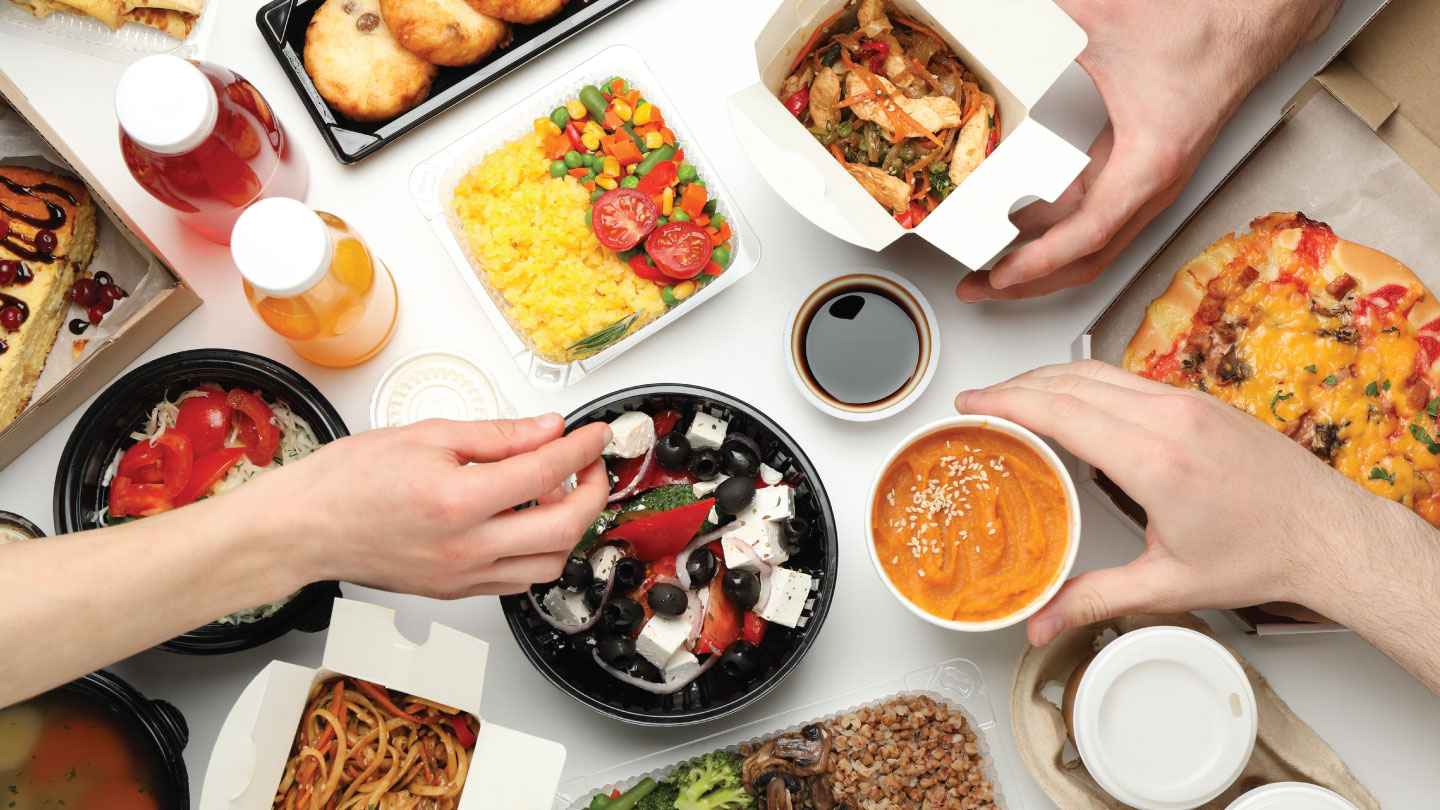Nutrition
Foods That Cause Acidity: Why Your Favourite Meals Trigger Heartburn
Before you blame your stomach, let’s talk about the food on your plate.

Ever wondered why a tasty meal sometimes bites back with a burning sensation in your chest? You’re not alone. Many of us have felt that uncomfortable acidity, the layman’s term for acid reflux or heartburn, after indulging in our favourite foods. Imagine it’s late evening and you’ve just polished off a spicy pepperoni pizza and a fizzy soda. You sink into the couch, happy and full, until that familiar burn creeps up your throat.
Why does this happen? It turns out certain foods can trigger acid reflux by relaxing the lower esophageal sphincter (LES), the muscle gate between your stomach and esophagus, or by increasing stomach acid production. I’ve been there, and it’s no fun! But let’s break down the common culprits so you can recognise them.
Related story: Role of Acid in Our Stomach
Spicy Foods: The Double Burn
My cousin winced after dinner and said, ‘That curry didn't just burn going in, it came back for round two. ’ Sounds familiar? A study from the Journal of Neurogastroenterology & Motility (2011) found that frequent spicy food eaters had more reflux symptoms. Capsaicin (the compound that makes chilies hot) might slow digestion and stretch the stomach, causing the LES (lower esophageal sphincter) to relax, basically opening the floodgates for acid to rise. GERD (gastroesophageal reflux disease) patients given chili capsules had significantly more stomach burning than those given placebos.
Moral of the story? That extra spicy taco may fight back later.
Fried and Fatty Foods: The Slow Burner
“Should I eat this samosa?” my colleague asked, in a mid-work break. He knew the answer. Fried foods like pakoras, chips, burgers, and creamy curries are heavy on fat, and fat is known to relax the LES while slowing down digestion. That combination gives acid more time and opportunity to rise. A Preventive Nutrition and Food Science (2021) review confirmed that high-fat diets are associated with significantly increased GERD symptoms. A study published in 2010 found that half of GERD patients identify fried foods as a direct trigger for their symptoms. Even better, when these folks cut out their trigger foods for just two weeks, the proportion who still had heartburn dropped from 93 percent to 44 percent.
Citrus & Tomato: The Healthy Betrayal
Let’s talk about oranges, lemons, and tomatoes. All healthy, right? Well, mostly. Citrus fruits are highly acidic, and for many, they can irritate the lining of the esophagus or increase stomach acid. Tomato-based sauce also has a similar effect. According to a review in BMC Gastroenterology (2024), both citrus and tomato products rank among the top dietary triggers for reflux. So if you notice your morning grapefruit or the salsa in your tacos gives you grief, you are not imagining it.
Coffee, Chocolate & Soda: The Sneaky Comforts
Let’s rip the bandage off: coffee and chocolate are often triggers, too. Chocolate contains caffeine and theobromine, both known to relax the LES. A study in Gut (a leading gastroenterology journal) way back in 1974 was one of the first to show that chocolate weakens LES pressure. Later research confirmed this effect. Coffee, especially when strong or taken on an empty stomach, can also relax the LES or increase stomach acid. While some studies say not everyone reacts the same, many people report coffee as a clear reflux trigger.
And soda? That’s a one-two punch: carbonation plus acidity. Burping (It occurs because the carbonation releases CO₂, stretching the stomach and increasing pressure, which nudges acid upward) expands the stomach and nudges acid upward. According to the Prevention Nutrition and Food Science 2021 review, carbonated drinks, especially sugary ones, are strongly linked with increased GERD symptoms.
Related story: Tips to Boost Energy Without Coffee
Onion, Garlic & Mint: Flavour Bombs With Fallout
Believe it or not, even onions and garlic can be trouble. A 1990 study in the American Journal of Gastroenterology found that people who ate raw onion with a burger had significantly more heartburn and reflux than when they ate the same burger without onion. A 2023 review in Medical News Today examined garlic's effects and stated that “research indicates an association between allium vegetables, including garlic, may worsen acid reflux-related symptoms,” especially when consumed raw. And mint? Though marketed as soothing, peppermint actually relaxes the LES. Some people feel worse after peppermint tea or mint desserts. If you’re one of them, swap mint for ginger; it’s less likely to provoke symptoms and might even help.
Sweets and Alcohol: Dessert Dilemmas
Surprise! Even desserts can stir the acid pot. High-fat treats like ice cream, chocolate cake, and creamy puddings combine multiple triggers, fat, sugar, and often chocolate. A 2024 BMC Gastroenterology study found that people who consumed a lot of sweets were more likely to experience GERD symptoms. And alcohol? Whether it’s wine, whisky, or cocktails, all types can relax the LES and irritate the stomach lining. A 2023 review in Nutrients listed alcohol as a consistent acid reflux trigger, especially when consumed late or in larger quantities.
Need all your wellness solutions in one place? A whole new world awaits just a click away.
So, What Can You Actually Do?
Great question. Here’s how to fight back, without giving up your favourite foods entirely.
- Identify Your Triggers: Keep a simple food & symptoms journal for a week. You might find patterns, maybe it’s coffee after 4 PM, or tomato-based curries that push your buttons.
- Time It Right: Avoid lying down for 2-3 hours after eating. Acid needs gravity to stay put. Eat dinner earlier, and go light on bedtime snacks.
- Portion Control: Instead of three large meals, try 4-5 smaller meals. Overeating expands the stomach and increases pressure on the LES.
- Choose Soothing Alternatives:
Swap:
Mint tea - Ginger tea
Orange juice - Watermelon or coconut water
Fried snacks - Roasted or air-fried options
Red sauce - White or pesto-based sauces
- Go Mediterranean: A study published in Gastroenterology Research showed that the Mediterranean diet, rich in whole grains, fruits (except citrus), vegetables, and lean proteins, helped reduce GERD symptoms significantly.
Related story: How to Prevent Acid Reflux?
Acidity doesn’t mean giving up joy; it just means knowing what your stomach likes and dislikes. Some people can handle small portions of chocolate. Others need to ditch the soda but can enjoy spice occasionally. You’re the expert on your body. Start small. Swap start. And when your food starts feeling like a fire-breathing dragon, you’ll know why and how to tame it.
So here’s to flavourful meals, without the post-dinner regret. Pass the ginger tea?
Get instant access to personalised nutrition advice just for you. Sign up here.
EXPLORE MORE
That constant urge to snack may have less to do with food and far more to do with water. Dehydration doesn’t always announce itself as thirst, and that misunderstanding changes how, when, and why we eat.
Five thoughtful breakfast combinations that work with diabetes, PCOS, thyroid issues, inflammation, and heart health.
From fibre and protein to gut health and mindful meals, these are the healthy eating lessons that stood out in 2025!
Bloating isn’t just about overeating or bad food choices. According to expert nutritionist Dr Lakshmi Kilaru, it’s often the result of multiple factors. Keep reading to know more.






.jpg)
.jpg)

.jpg)
